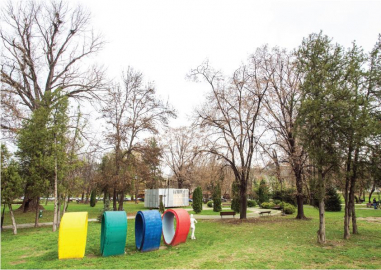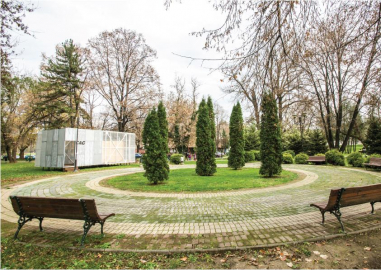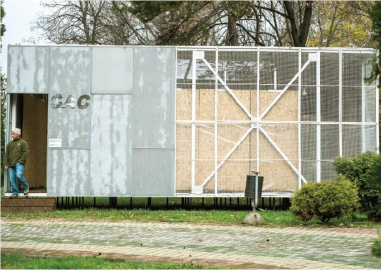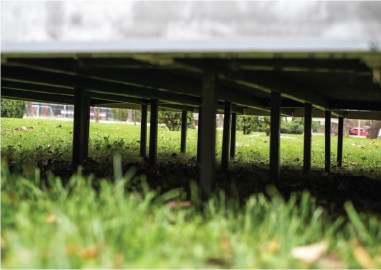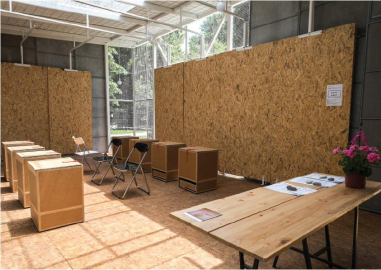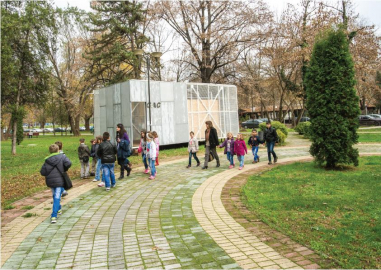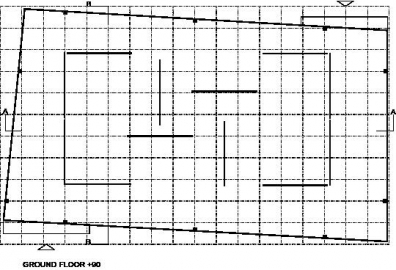Mobile Exhibition Gallery
The mobile exhibition gallery serves as a an adaptable space for art exhibitions, concerts and other public and cultural events. Located in the Francophonie Park in Skopje it provides 45 m2 flexible exhibition space.
The gallery can be considered as many galleries at the same time, since it can be easily transported from one place to another to serve the same purpose, thereby saving additional consumption of materials. Furthermore, the fact that the gallery has hosted more than 40 events during its first year of existence, proves its cultural sustainability aspect.
The following text describes the train of thought in the process of creation of an architectural, art work.
Actually, for me personally, there is no such thing as a thick borderline between architecture and art. These two disciplines intertwine constantly.
How does one go about creating architecture? How does one create a spatial atmosphere which makes you feel excited, regardless whether you are an exhibitor or a visitor?!
To draw a gallery which is mobile as well, is a complex assignment! How does one draw up a multilayer space that will provide the beneficiary with a spatial experience to remember?!
The mobile gallery has a few easily spotted aspects that need to be considered. It stands on a total amount of 48 thin, almost invisible steel columns, which not only make it float, but also make you feel as if it will start moving by itself. It is a mobile gallery, indeed. Being lifted up, it shows an elementary relation to nature, which the architecture in our deflatingsociety , does not seem to consider at all. In our city, the nature is constantly burdened by some sort of superficial imperialistic conquest.
In the space in-between the gallery floor and the land, there is countless vegetation and insects that should logically be preserved. The second important aspect of this space is the proportion of the volume, human-appropriated, spatial volume that gives the possibility of displaying on all inner surfaces.
Its transparency does not allow a direct cut between the object and nature, hence the effort to assimilate it in the given context , i.e. the lack of clear boundaries between nature and architecture is an effort to bring it to a minimum. The object can also be disassembled, which makes it open for broader use. I wonder if you can set up an amateur theater play inside. The inner volume is defined by a visually opened cover surface which vertically connects it with the nature.
There is another volume within the inner volume which is also mobile and transformable. This volume moves using an axial ball baring set up on the exhibition panels providing movement on two axes. The remaining part, the one between the internal volume and the gallery itself is easily perceived.
The construction of the object always defines the basic architectural concept. When you have a statistics expert present since the very beginning of the project, who at the same time understands architectural principles thoroughly , which is not always the case in our community, one readily creates a structure which is part of an architectural whole.

